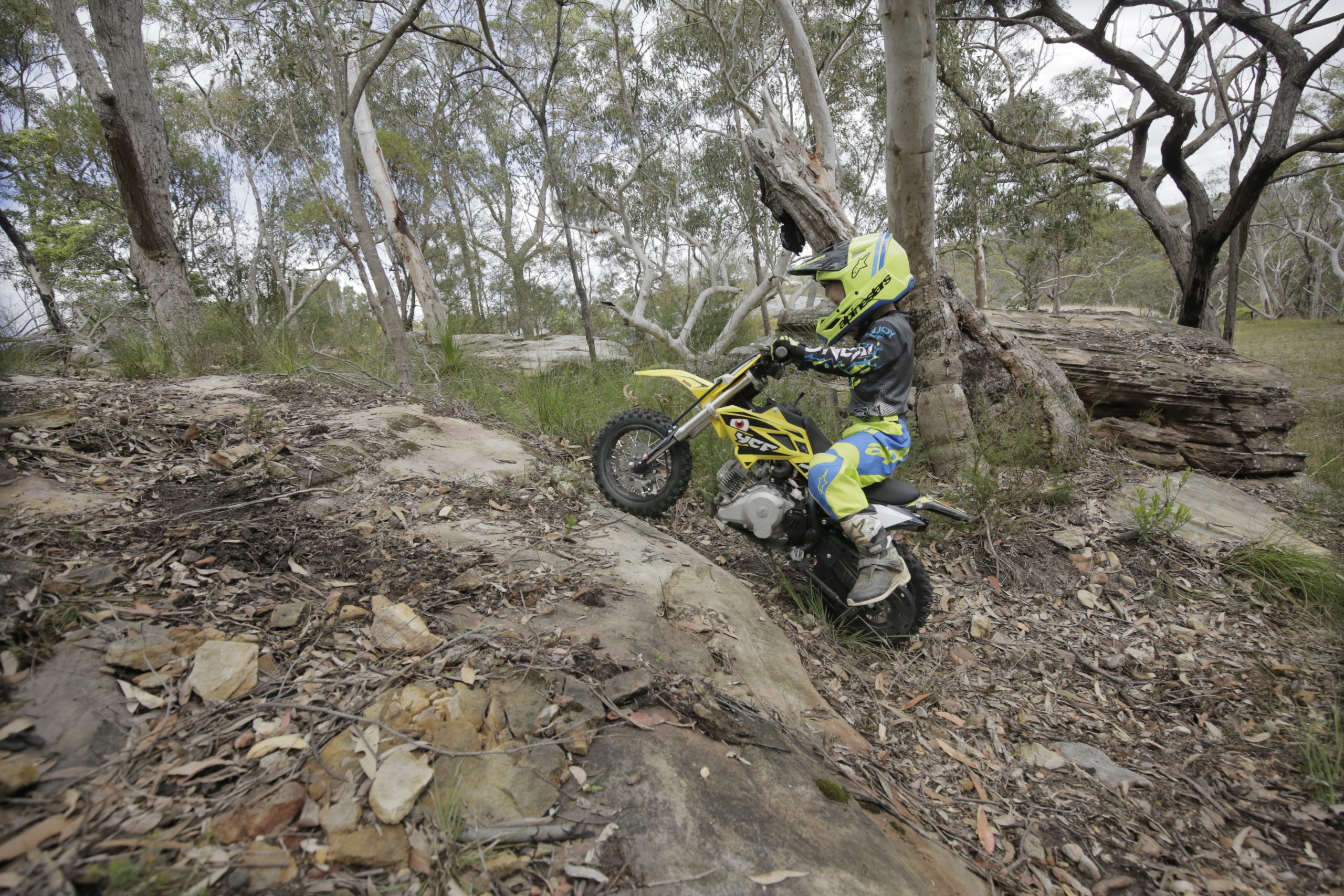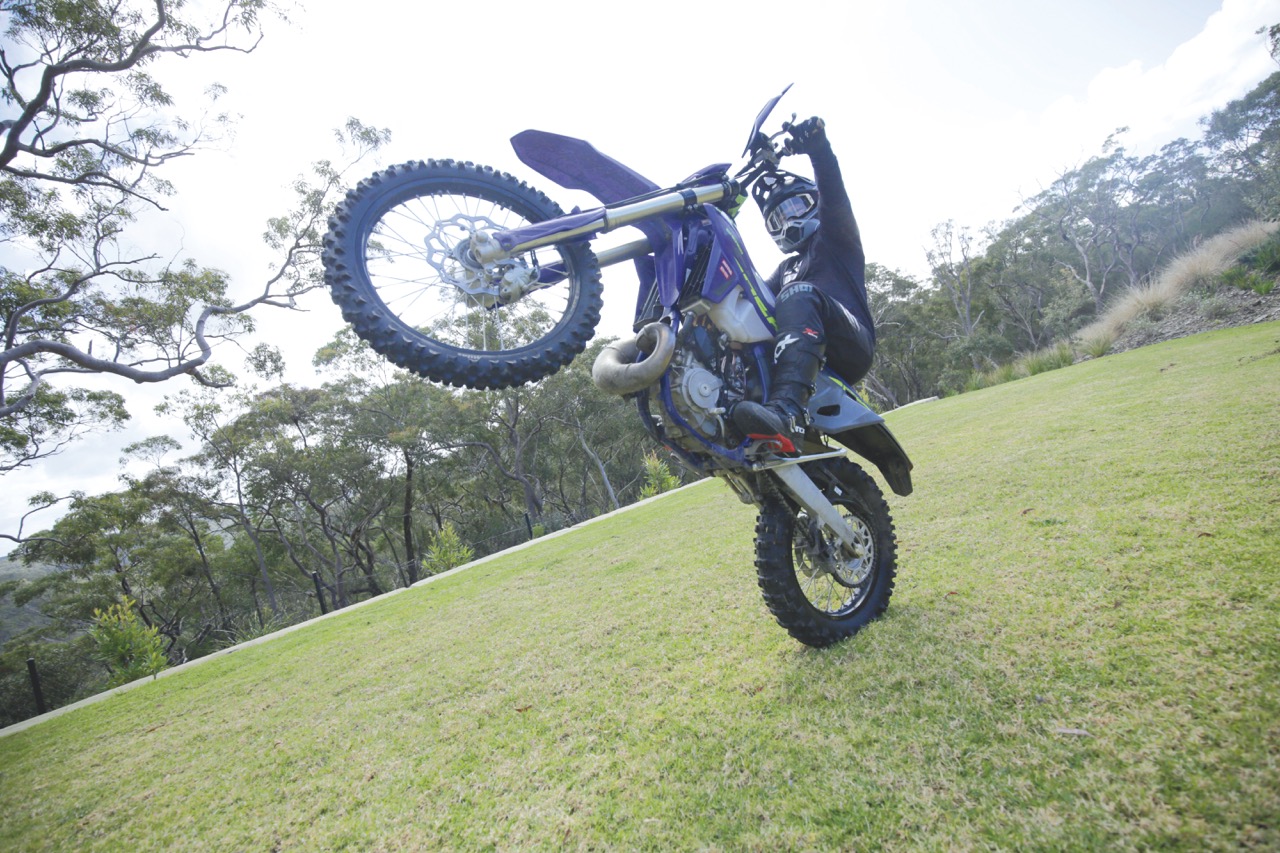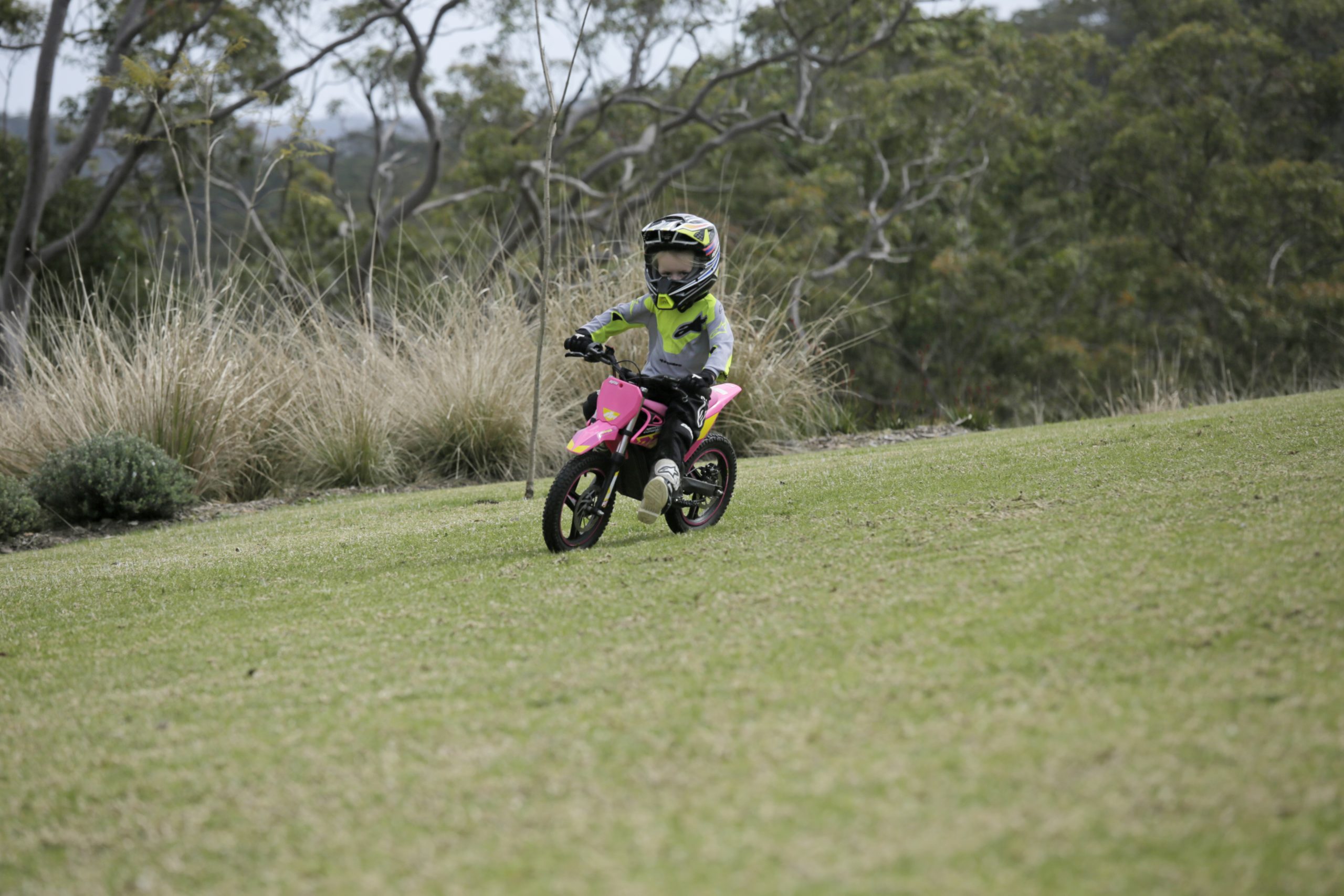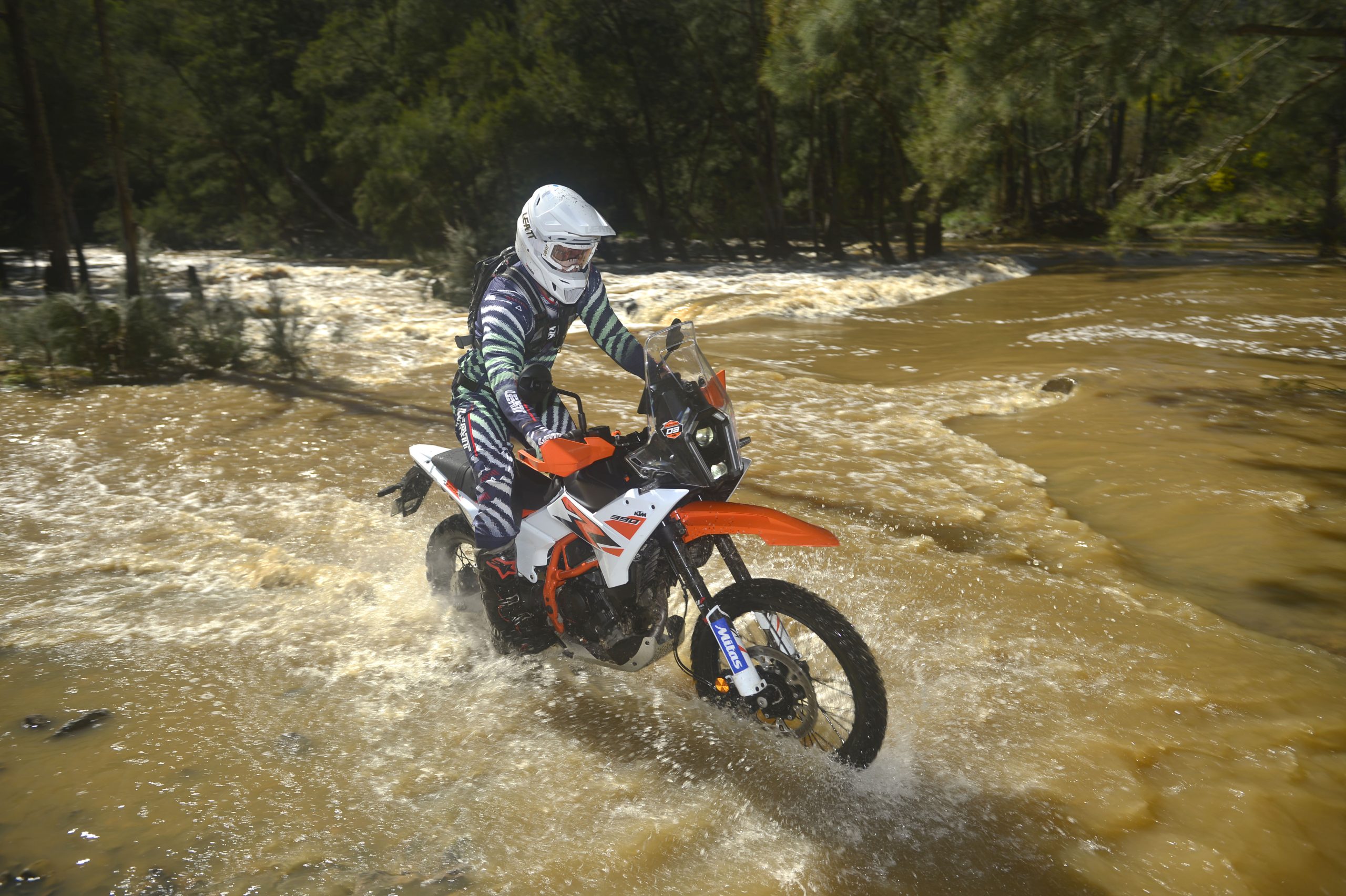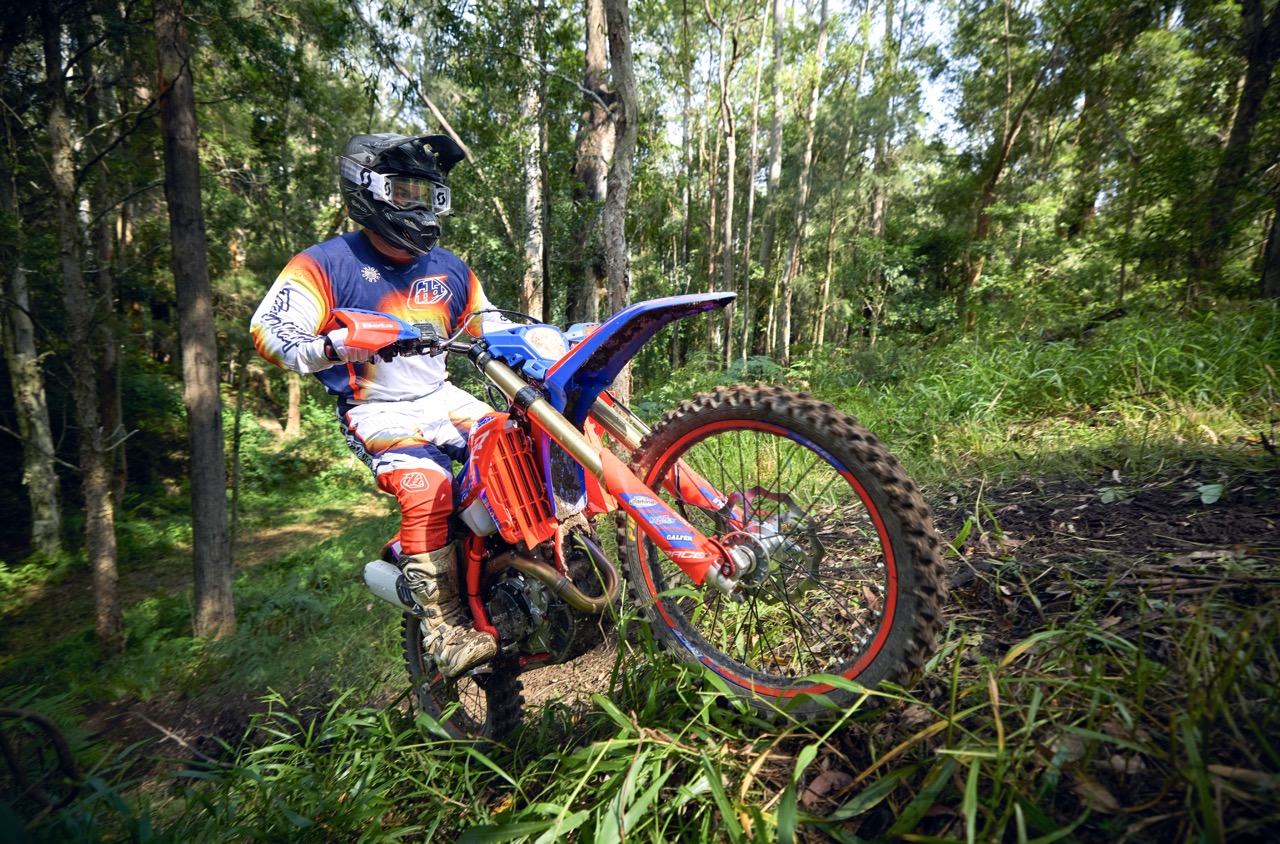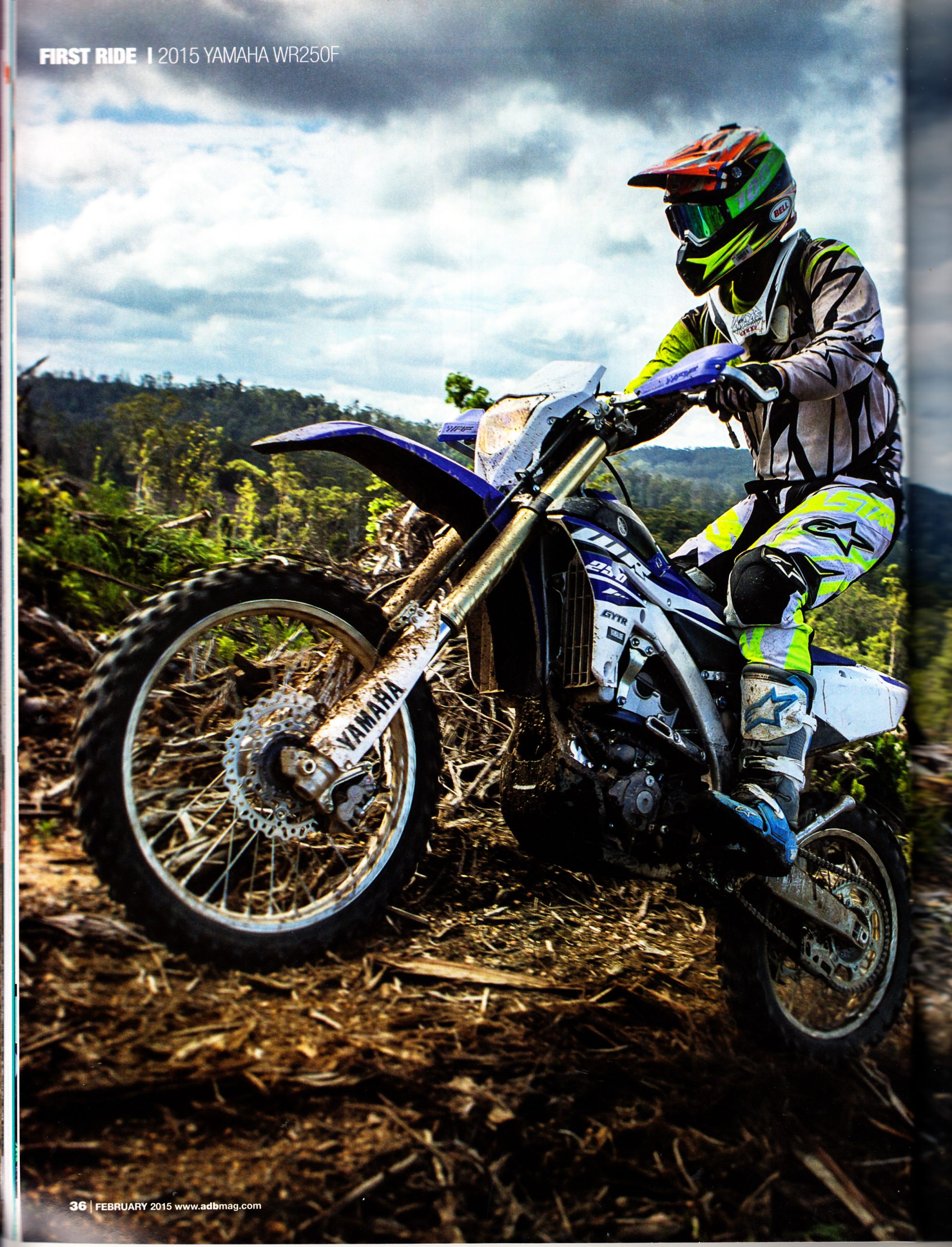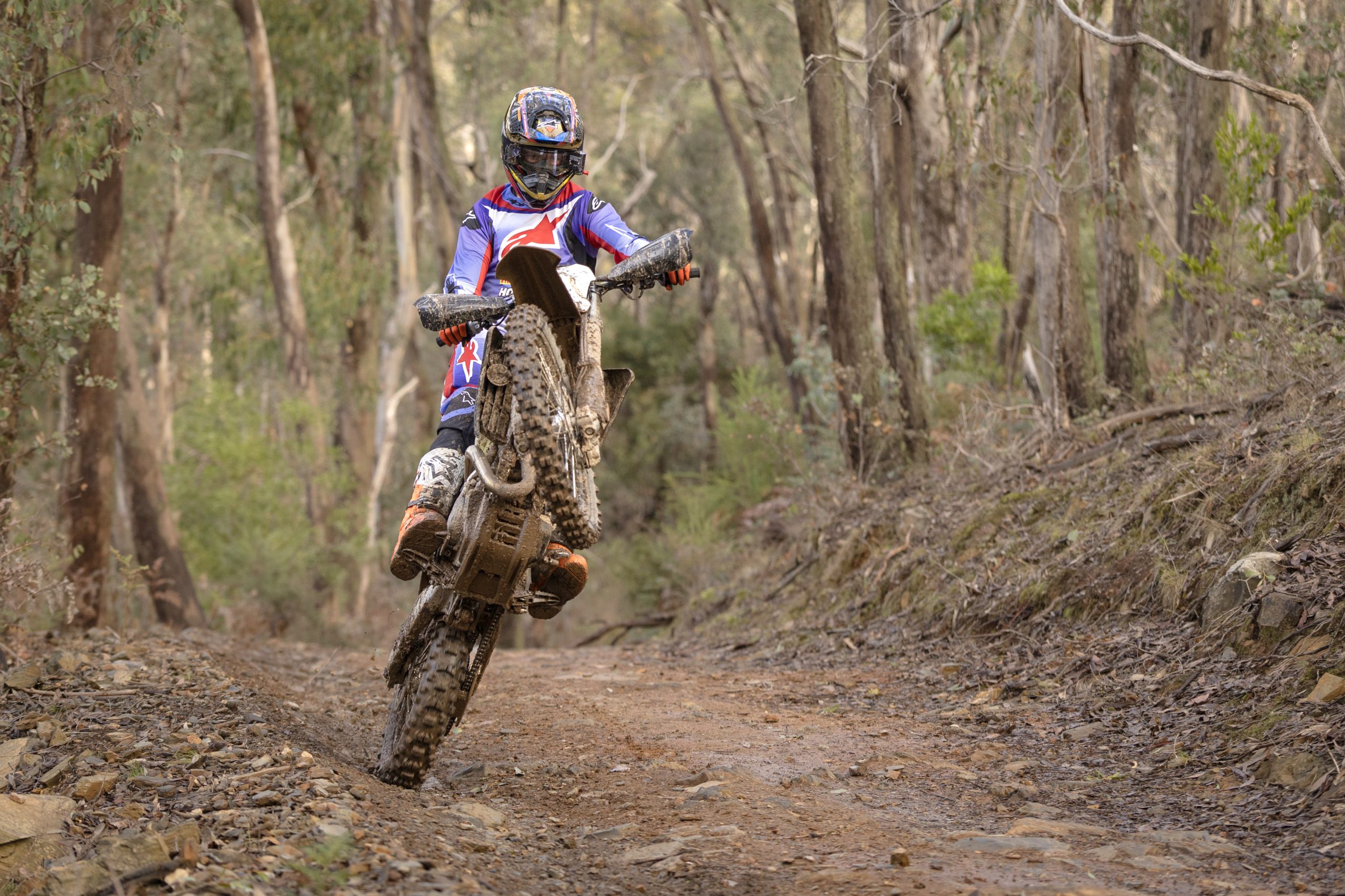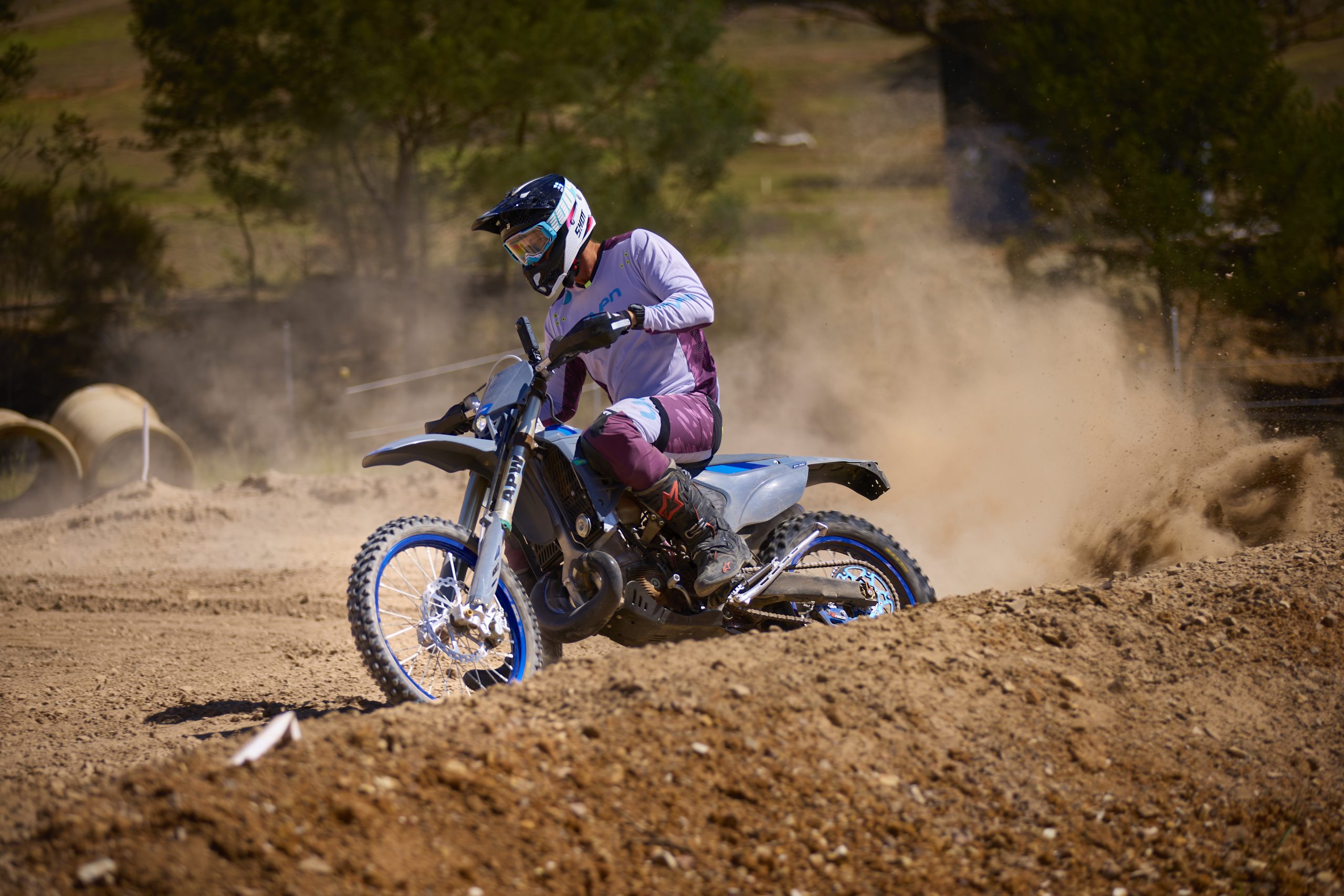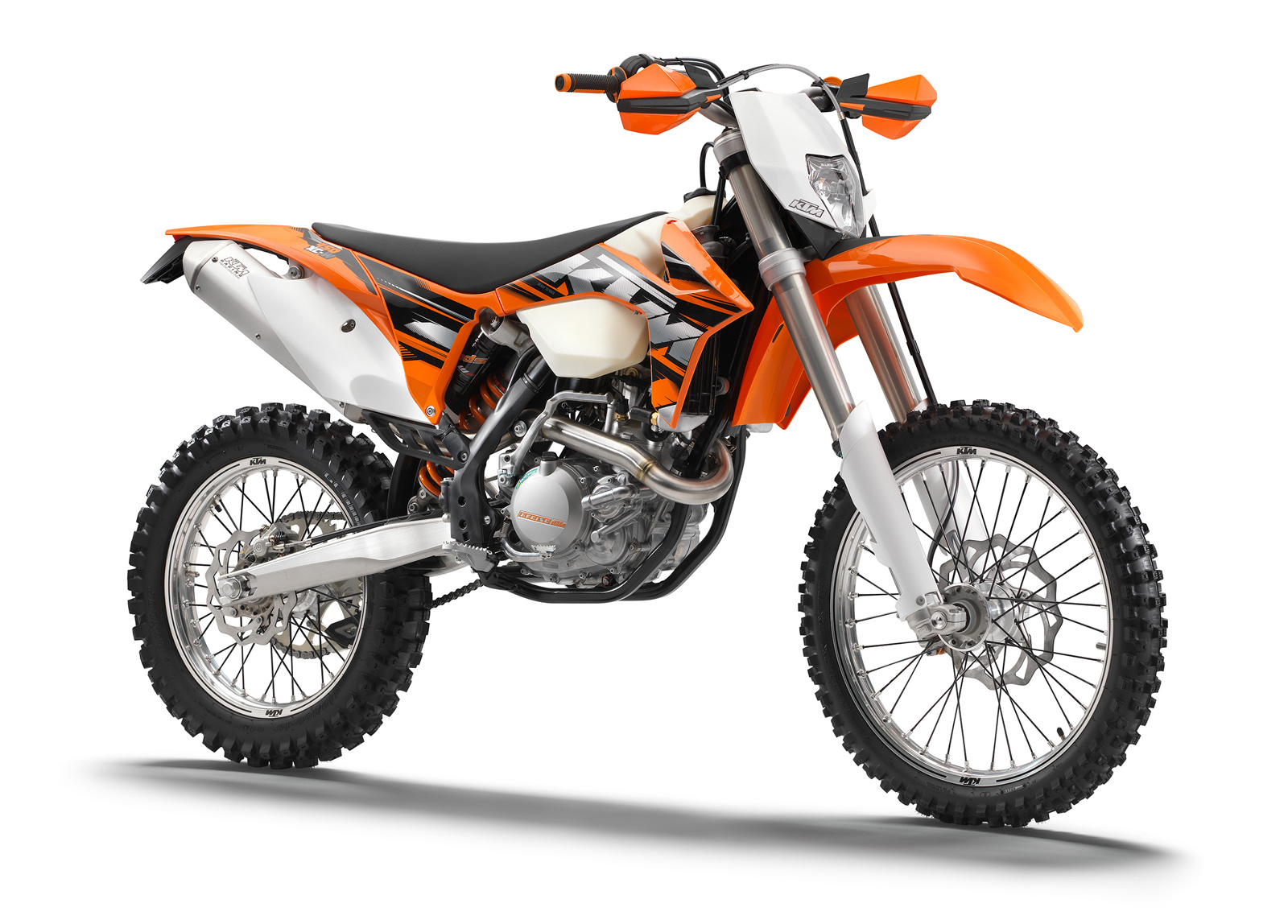A 125 two-stroke enduro will struggle to be a best seller world-wide, especially in Australia, but Beta had good reason to dedicate the time and money necessary to developing one, according to Beta marketing manager, Giacomo Caliterna.
“Beta saw a gap from the RR50 to the rest of the range. We’ve had a lot of riders from when they were young, 14 years old, then we lost them because we didn’t had a 125. For us it’s important to have the complete range so a rider can start with us at a young age and continue with us through their career, keep them in the Beta family.
“It’s been in development for many years and we are confident it will be well received, especially in Europe where smaller capacity bikes are popular. We expect the main market will be Italy, France, Germany but why not other parts of the world?
“At this stage it’s too early to say if someone will race the RR125 in the EnduroGP but the 125 is born for racing. We don’t know if during the next season it will be in the official racing team but that [racing] is the main characteristic of the 125.”
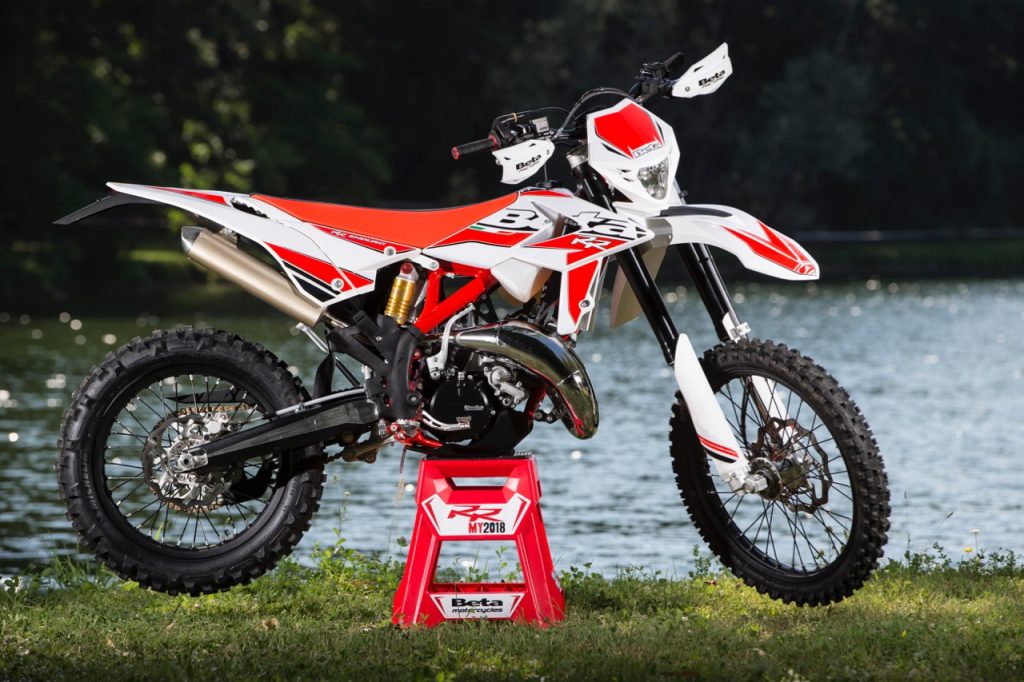
I was excited to ride the RR125 at Beta’s 2018 RR International Press Launch in Italy. It went like you expect a modern 125cc two-stroke should. You can ride it wide open and it won’t pull your arms off. I’m not going to exaggerate and say it’s got loads of torque, because it doesn’t.
For a 125, sure, it has more torque than 125s of yesteryear but, at the end of the day, it’s still a 125. If you don’t give it the berries you won’t be getting to your destination anytime soon.
Despite weighing in at 94.5kg dry, most of the time the RR 125 holds its line over rough terrain, something low-mass bikes can struggle with. I think it comes down to the plush suspension, it soaks up small rocks and sharp edges rather than deflecting. If the sub-100kg pocket rocket does act up it can be man-handled back into line.
The clutch has the lightest pull of the range because it’s a completely different design. It’s a reverse-operating clutch. Pulling on the clutch lever separates the clutch plates in the direction from right to left.
It produces a lighter pull because it uses lighter clutch springs and benefits from better lubrication and distribution of heat.
It stops and turns like a mountain bike thanks to strong Nissin brakes. It’s a fun bike but I would think twice about having it as my only ride. A 125 simply isn’t as versatile as a 250 or 300 and there would be many situations where I’d be looking for more power on the 125. For junior enduro riders though, it serves as the perfect stepping stone from learner four-strokes to two-stroke enduros.
Words: Olly Malone
